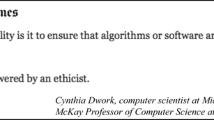Abstract
This paper develops three arguments for increasing the strength of database protection under U.S. law. First, stronger protections would encourage private investment in database development, and private databases have many potential benefits for science and industry. Second, stronger protections would discourage extensive use of private licenses to protect databases and would allow for greater public control over database laws and policies. Third, stronger database protections in the U.S. would harmonize U.S. and E.U. laws and would thus enhance international trade, commerce, and research. The U.S. should therefore follow the European example and develop two tiers of protection for databases: 1) protection for creative databases under copyright law; 2) protection for non-creative databases through a special type of sui generis protection. In order to balance private control of data and public access to data, sui generis protections should define a “fair use” exemption that permits some unauthorized extraction of data for private, educational, and research purposes, provided that such extraction does not adversely impact the economic value of the database.
Similar content being viewed by others
References
Lucky, R. (2000). The quickening pace of science communication. Science 289: 259–64.
Lemley, M. et al. (eds.). (2000). Software and Internet Law, Aspen Publishers, New York.
Roberts, R et al. (2001). Building a “genbank” of the published literature. Science 291: 2318–2319.
Organization for Human Brain Mapping. (2001). Neuroimaging databases. Science 292: 1673–1676.
Freno, M. (2001). Database protection: resolving the U.S. database dilemma with an eye toward international protection. Cornell International Law Journal 34: 165–225.
American Library Association. (2002). Issue brief: database protection legislation. www.ala.org/washoff/database.html (Accessed: February 18, 2002).
Conley, J., Brown, M., and Bryan, R. (2000). Database protection in a digital world: why the United States should decline to follow the European model. Information and Communications Technology Law 9, 1: 27–60.
Miller, A. and Davis, M. (2000). Intellectual Property, 3rd ed. West Publishing, St. Paul, MN.
Kuflik, A. (1989). Moral foundations of intellectual property rights, in: Weil, V. and Snapper, J. (eds.) Owning Scientific and Technical Information, Rutgers University Press, Brunswick, NJ, pp. 29–39.
Nozick, R. (1974). Anarchy, State and Utopia, Basic Books, New York.
Glendon, M. (1991). Rights Talk, The Free Press, New York.
Mill, J. (1956) [1859]. On Liberty, Liberal Arts Press, New York.
U.S. Constitution, Article 1, Sec. 8 (1789).
Resnik, D. (in press). A pluralistic account of intellectual property. The Journal of Business Ethics.
17 U.S.C. 101-512 (1976).
U.S. Copyright Office. (2000). Copyright Basics, U.S. Copyright Office, Washington, D.C.
Alfred Bell & Co. v. Catalda Fine Arts, Inc. 191 F. 2d 99 (2nd Cir. 1951), 298.
Feist Publication v. Rural Telephone Service Company. 499 U.S. 340 (S.Ct. 1991).
Bitlaw. (2002) Database legal protection. www.bitlaw.com/copyright/database.html (Accessed: February 18, 2002).
Matthew Bender and Company v. West Publishing Company. 158 F. 3rd 693 (2nd Circ. 1998).
Warren Publishing v. Microdos Data Corp., 115 F. 3d 1509 (11th Cir. 1997).
Ginsburg, J. (1992). No “sweat”? Copyright and other protection of works of information after Feist v. Rural Telephone. Columbia Law Review 92: 338–348.
Rohwer, C. and Skrocki, A. (2000). Contracts, 5th ed., West Publishing, St. Paul, MN.
National Academy of Science. (2000). The Digital Dilemma, National Academy Press, Washington, DC.
European Union. (1996). Council Directive No. 96/9, 1996 O.J. (L 77/20).
Gardener, W. and Rosenbaum, J. (1998). Database protection and access to information. Science 281: 786–87.
Mauer, S. and Scotchmer, S. (1999). Database protection: is it broken and should we fix it? Science 284: 1129–1130.
Keck, R. and Goode, D. (2001). Of misappropriated manure heaps, rude robots, and broken promises: the (d)evolving law of database protection. The Business Lawyer 57, 1: 513–540.
Author information
Authors and Affiliations
Corresponding author
Rights and permissions
About this article
Cite this article
Resnik, D.B. Strengthening the united states’ database protection laws: Balancing public access and private control. SCI ENG ETHICS 9, 301–318 (2003). https://doi.org/10.1007/s11948-003-0027-8
Received:
Revised:
Accepted:
Issue Date:
DOI: https://doi.org/10.1007/s11948-003-0027-8



